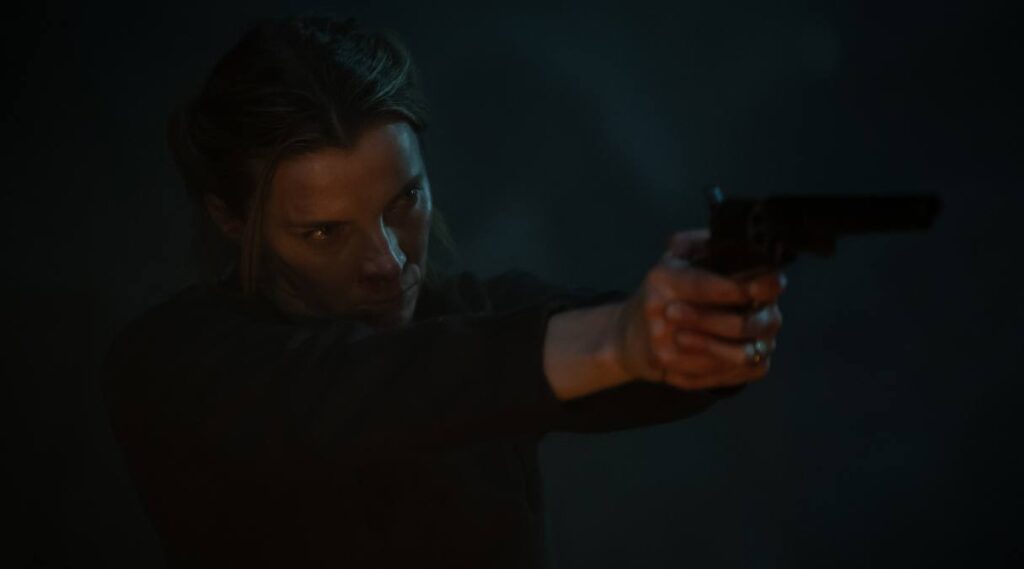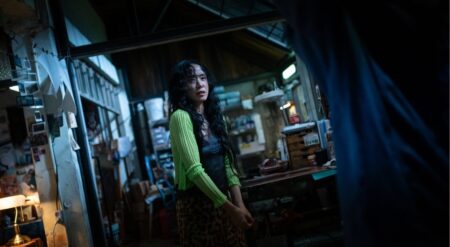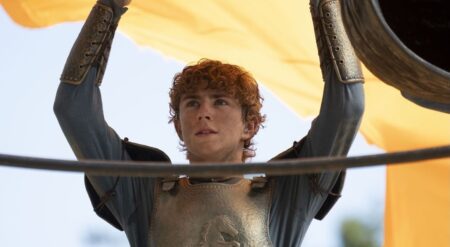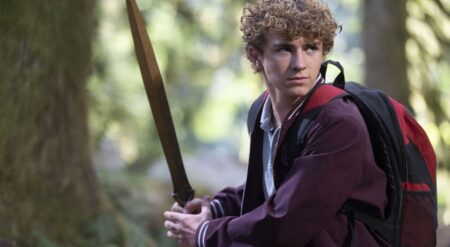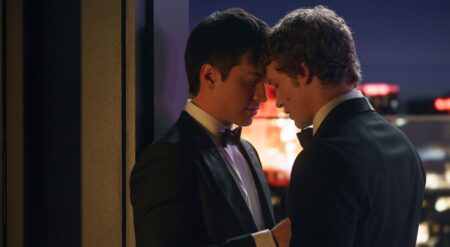Creator Mark L. Smith (who also serves as the series’ writer) and director/executive producer Pete Berg tackle the West. Set in 1857, American Primeval isn’t a story looking to valorize Westward Expansion. Instead, the Netflix Original mini-series hones in on the brutality of the time period. Pain is everywhere, and hatred stokes everyone’s desire to survive. With little compassion, there is no safe haven in Utah and the lands around. Make it West and survive. That’s the goal, and maybe you’ll find peace somewhere in between.
A fictionalized drama, American Primeval is about the violent collisions of culture, religion, and community. It’s about control and hope and how the oscillation between both allows violence to flourish. Through multiple storylines, we explore the period and the land. There is no salvation in a land besieged, whether you’ve lived there for generations or looking to claim it as your home.
A Mormon couple separated after a raiding party struck their caravan, Jacob Pratt (Dane DeHaan) and Abish (Saura Lightfoot Leon) are two different witnesses to one event. Members of the Army are trying to keep the Mormons and their claim of divinity in check. Sara Rowell (Betty Gilpin) and her disabled son Devin (Preston Mota) are heading westward to escape a ruined life on the East Coast, a bounty on her head, and a stowaway (Shawnee Pourier) in her wagon. And then, the Shoshone are trying to survive as the world is being blown up around them.
The marketing for American Primeval did the series a disservice, particularly where its Indigenous characters are concerned. At first, the appearance of the Shoshone is only through the way that we see any Native tribe in the genre. Raiding a caravan of wagons, scalping, and kidnapping white people they encounter. It’s what was prioritized in the series’ trailer and what made me cautious about the series.
Violence is the main narrative element in this vision of the American West.
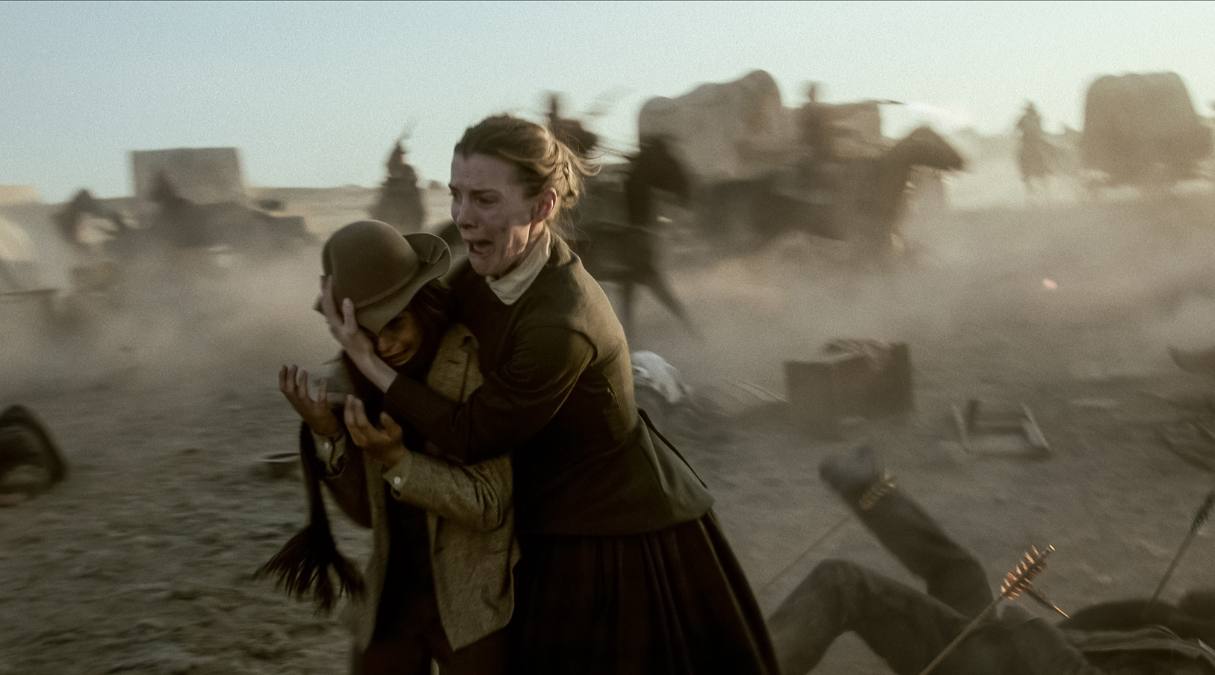
The reality is that the work that Julie O’Keefe did as the Indigenous Cultural Consultant and Project Advisor comes through in the script. It stars Nanabah Grace, Kaius Eteeyan, Tokala Black Elk, Derek Hinkey, Mosiah Crowfoot, Irene Bedard, and Shawnee Pourier, and while there are certain tropes that the series engages in, American Primeval also showcases that the Shoshone were victims first, aggressors second. However, the series is less concerned with making an anticolonial statement than it is with highlighting the conflict that erupted over land and the evil it wrought.
The Shoshone characters have agency and humanity, people they love and want to protect. Directorially, the scenes with the Shoshone are given the same care as those that don’t feature them, even if their conversations aren’t always subtitled. What also must be said for the series is its attention to detail in every setting. The most impressive of which is when it comes to the wardrobe of the Shoshone and their camps.
The series employed artisans Hovia Edwards-Yellowjohn (Shoshone Bannock-Navajo), Pete Yellowjohn (Shoshone Bannock), Georgette Running Eagle (Shoshone Bannock), Robert Perry (of Bannock Shoshone descent), Kugee Supernaw (Quapaw and Osage) and Son Supernaw (Quapaw-Osage and Caddo), Joe Cheshawalla (Osage) Debbie Cheshawalla (Choctaw), and Molly Murphy Adams (Oglala Lakota), to work on these sets. Every major area of the series is made to be quickly moved and left when needed, whether it’s Mormon, army, or Native.
The amount of detail and depth put into each set shows how each person connected to the land they were fighting for. The army is set to move quickly, the Mormons are looking to become permanent, and the Shoshone have built their entire lives on the land already. It’s the subtlty in set design that allows the story to be told visually as much as through dialogue.
Indigenous actors take the spotlight in American Primeval (2025) when its at its best.
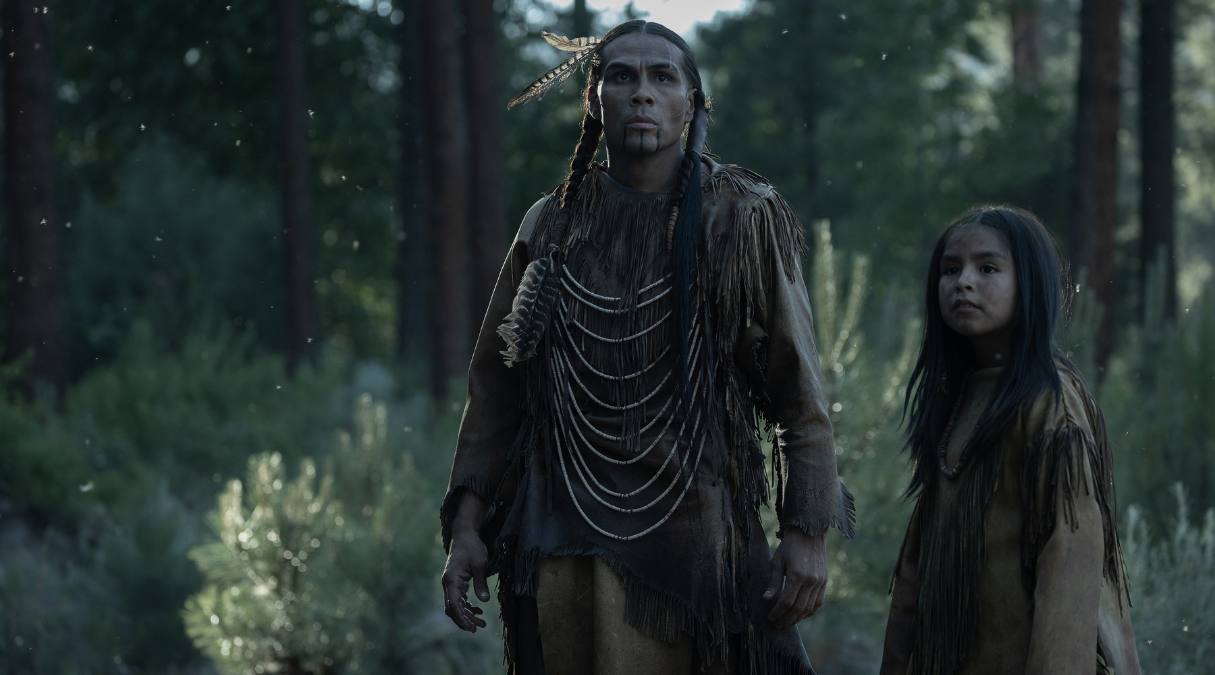
Derek Hinkey as Red Feather, Irene Bedard as Winter Bird, Shawnee Pourier as Two Moons, Tokala Black Elk as Buffalo Run, and Nanabah Grace as Kuttaambo’i all give emotive performances across their screen time. The amount of time we spend with them is refreshing in the genre, and it makes the series’ ending all the more helplessly bleak.
Others in the genre better contextualize the period’s larger injustices without using white characters as the voices of reason. For American Primeval, though, it relies on the white captive to start building understanding. However, the series refreshingly doesn’t cast blame on the Shoshone either. The Western genre and the dramatic stories told within it have the chance to reshape the past every time the audience steps into it. Still, striking that balance between understanding the inflection points of violence and the humanity behind them helps push the stories further. Yet, the genre is a strong foundation for storytelling when explored through multiple perspectives.
The series also tests the viewers’ expectations of what savagery is. I’ve learned to hate the word and how it’s been used to describe the people, places, and history I’m connected to. But in American Primeval, it’s part of the series’ thesis. The brutality and violence on display across every episode are hard to watch. It’s unnerving, always cutting away at the right moment before you turn your head.
American Primeval uses rape as a part of its violence. But surrounded by racial violence and brutal murders, the restraint that the team approaches those moments with is commendable. The camera is not concerned with capturing the act itself, but rather the fallout. Sexual violence against women seems like the only way for male writers to contextualize the violence of an era, but here, it never broaches into exploitation.
One of the most interesting elements of the series is who is cast as the aggressor. Set in 1857, the series hones its story through heavy inspiration from the real-life Mountian Meadows Massacre, led by Brigham Young and the Mormon men he led. In an attempt to take and keep the land for themselves, they executed a massacre and blamed the Shoshone. The violence and politics that erupts is something we haven’t seen in dramas set during “Westward Expansion.”
The series offers one of Netflix’s bleakest looks at period dramas.
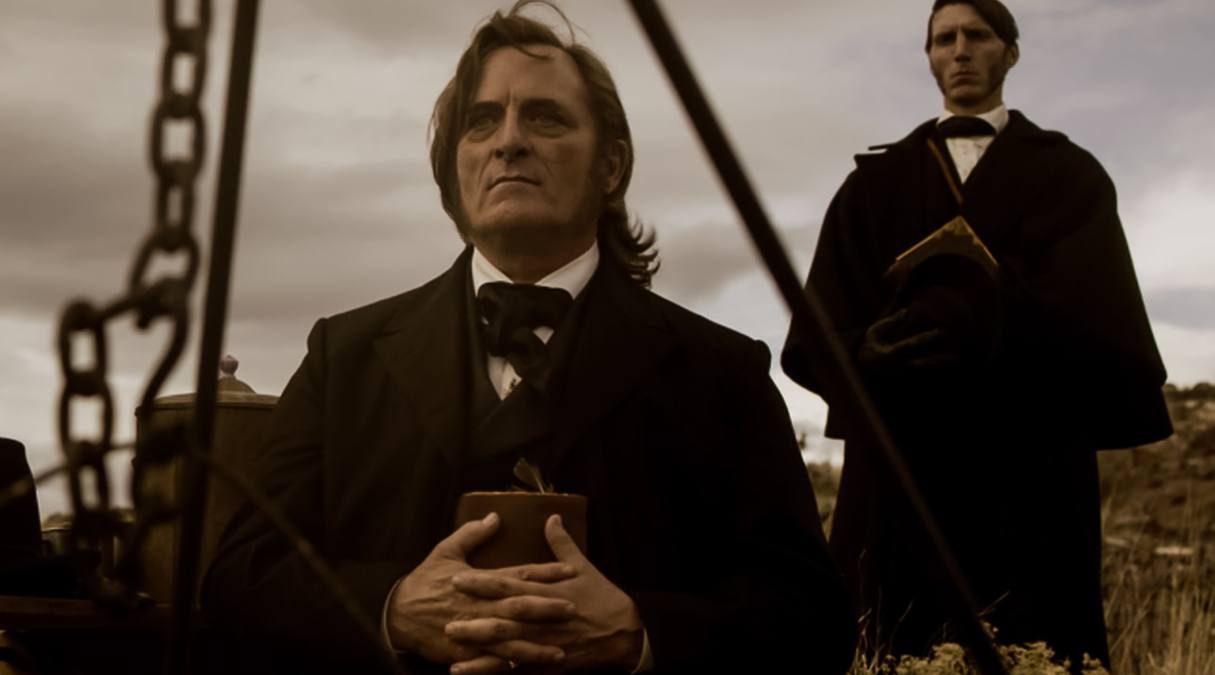
In most of the stories we see of the American West, it’s the Native people who are the aggressors and the white settler the hapless victim. In American Primeval, Young’s community is looking to rip anyone not Mormon from the land through any means necessary. In fact, some of the most heinous and terrifying acts of violence in the series force the American audience watching to rethink their concepts of the party involved and what expansion truly meant even American against American.
This makes the conflict with the Shoshone one axis that the narrative is anchored to, but it also highlights the reality that not every white settler was from the same ethnic, religious, or even national background. This is best highlighted as Sara makes her way toward California with her son, Two Moons, and Isaac at the front.
The horrors that Sara sees aren’t at the hands of the Shoshone but the people who claim “civilization” is their right. Savagery is everywhere, and pretending otherwise is how she repeatedly puts herself in danger. Sara changes throughout each episode; she learns more about the people around her, and while her bigotry is stacked high, the way it falls is based on where she feels safe and where she doesn’t which speaks volumes as we experience nearly every community in the area through her.
Saura Lightfoot-Leon’s Abish and her fear of her own people are also core to understanding the area’s landscape at the time. She is more scared of returning Young and his people, as well as her husband, than she is of remaining with the Shoshone despite her anger and hatred toward them. Abish’s role in the story is, in many ways, an audience insert.
A white face for the viewers to identify with and show that humanity is on both sides of the violence and no peace can happen. While her monologue in the last part of the mini-series is both frustratingly milquetoast and the embodiment of a white savior that the series could have done without, Leon’s acting is superb. As Abish, she’s heartbreaking and frustrating, and you can’t help but be moved by the final moments of her character.
The tragedy of American Primeval is how raw it leaves its audience. There is little happiness to be found, even smaller amounts of catharsis; instead, it’s just broken bodies and people. With excellent usage of a haunting instrumental of “This Land Is Your Land” played over some of the series’ worst moments, American Primeval wants you to understand how “the West was won.”
Every actor in American Primeval is at their very best.
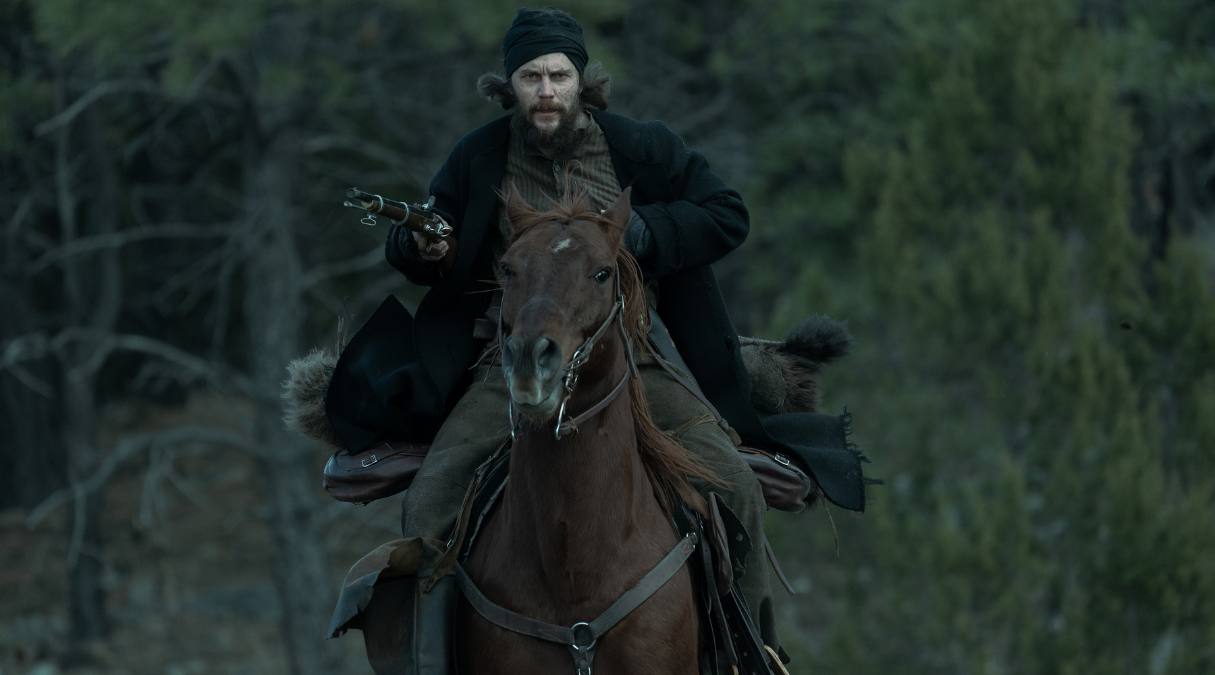
There is no shortage of superb talent in the series. Taylor Kitsch as Isaac is the best I’ve ever seen the actor. Dane DeHaan as Jacob Pratt, Alex Breaux as Wild Bill Hickman, Nick Hargrove as Cottrell, and Shea Whigham as Jim Bridger are all different levels of compelling and repulsive depending on who they’re interacting with.
But it’s Kim Coates’s performance as Brigham Young that is terrifying, infuriating, and loathsome. American Primeval highlights the worst in people and tries to make the audience confront it head-on. Violence begets violence, rhetoric stokes the flames, and ultimately, no one is immune.
Action is also at the forefront of American Primeval. Large battles and substantial setpieces create an immersive experience. Whether it’s large battles that highlight the landscape being fought over or one-on-one close-quarters combat, the fight choreography is excellent and far beyond what’s typically expected from the period dramas in the genre. At the same time, the action never swallows the narrative and instead accentuates it.
While American Primeval suffers from some standard use of tropes and the traditional pacing problem for Netflix Originals at this length, it still excels. The series is one of Netflix’s best and bleakest looks at the past. And for that, it’s a must-watch.
American Primeval is bleak. The way it ends and the warnings it maps out all come together in a violent spectacle that doesn’t coat the West in a valorizing light. Additionally, the villains of the West are everyone. It’s a take on the Western period drama and adjusts the lens to focus on the ills, the hopes, the evils, and the humanity of the cultures involved. The series is flawed, and yet the care put into the winding lives and motives of the ensemble keeps it strong the entire way through.
American Primeval is streaming now exclusively on Netflix.
American Primeval
-
Rating - 9/109/10
TL;DR
American Primeval is bleak. The way it ends and the warnings it maps out all come together in a violent spectacle that doesn’t coat the West in a valorizing light. Additionally, the villains of the West are everyone. It’s a take on the Western period drama and adjusts the lens to focus on the ills, the hopes, the evils, and the humanity of the cultures involved.

